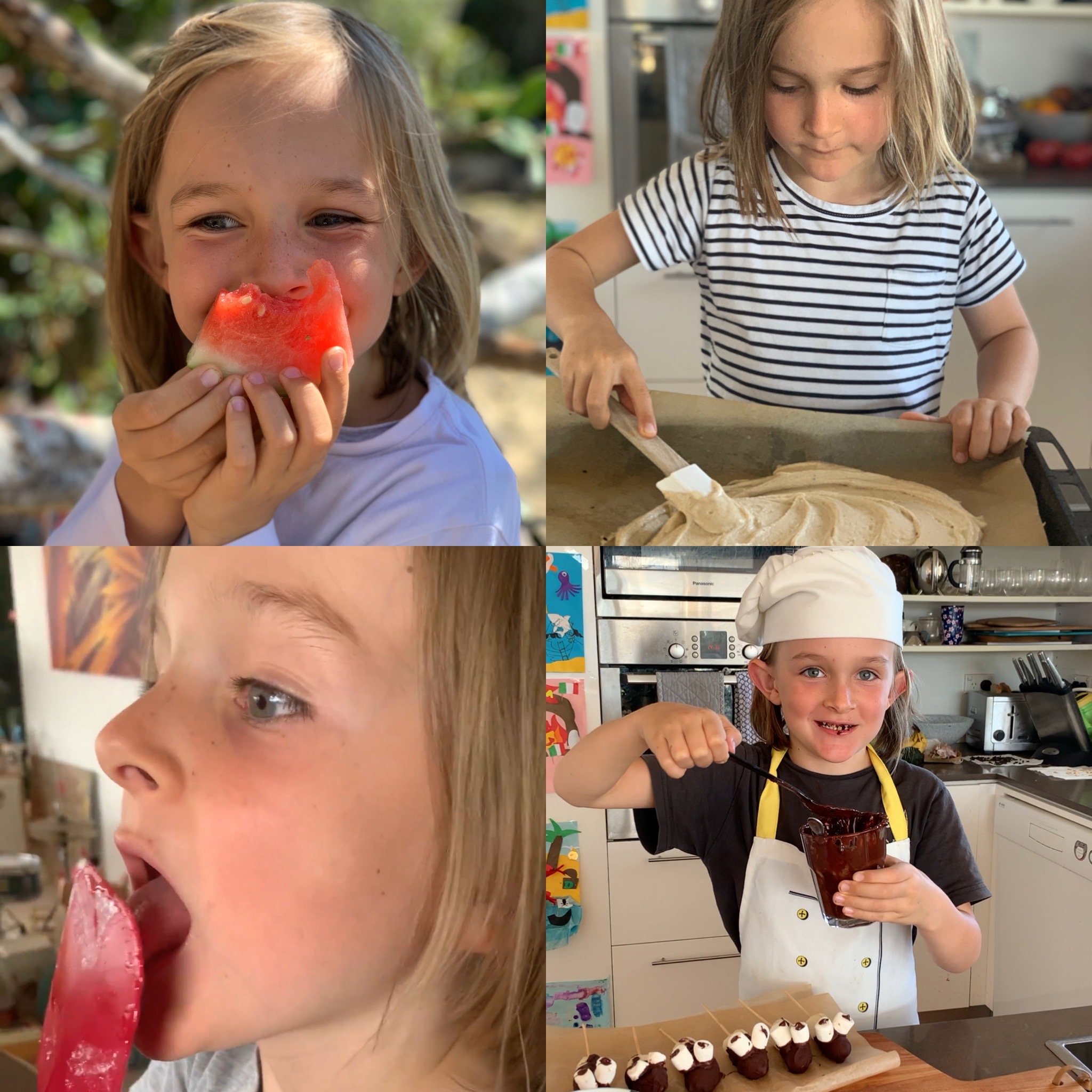Sugar detoxing your little sugar addict
(This article appeared in COAST MAGAZINE SEPTEMBER 2021)
Most of us should eat less sugar, and that goes for our kids, too.
In a perfect world, we’d try to avoid giving our children a sweet tooth, yet we are born with a preference for sugar; breast milk is full of lactose (milk sugar), after all.
Other sugars we eat include fructose (the sugar in fruits), and sucrose (cane sugar and table sugar). Then there’s glucose, which is what fructose and lactose are converted to in our bodies.
But sucrose, in its white processed versions, and in syrups, sweeteners and grains such as flour, can wreak havoc if we overload our bodies. It can disrupt blood-sugar levels, cause weight gain, create inflammation, as well as generate mood and behaviour changes.
We could probably all do with a sugar detox of some kind, but (the good news is) it should never be about quitting sugars that are good for you.
Carbohydrates, sugar and starch in their natural forms – fruits and vegetables for example – are vital in the functioning of our cells, and in replenishing glycogen after exercise that, hopefully, your little ones are getting plenty of. Fructose and sucrose, in the right balance, are actually good for maintaining blood sugar levels.
Removing all sugar can be dangerous
Removing entire food groups from anyone’s diet can be dangerous – whether it’s for a low-fat, protein-only, vegetarian or a vegan diet. So there’s no need for us to add no-sugars to that list.
Why? Well, there’s a scientific reason. When you first give up carbs, your body will use its stores of fat and protein as energy instead, but once that excess is gone, it will use adrenalin as its energy source. Then it will start breaking down muscle, and borrowing from other systems in your body. That’s a huge amount of confusion for your hormonal, endocrine and adrenal systems. It’s all about the balance in your diet.
How to start breaking the sugar addiction
Most parents try to form healthy eating habits for their little ones as they introduce a variety of foods, but what if outside influences have already made your kids into little sugar addicts?
Be reassured, there are surefire ways to get them off their sugar rollercoaster. Every meal – even snacks – should contain protein, fat and carbohydrate. (There’s that essential ‘balance’ again.) These three macro-nutrients work together to give us energy, reacting off each other to break down into nutrients that each of our cells can use. That’s the point of food in the first place.
Pasture-farmed meats and their fats contain vital amino acids, which turn food into protein, and protein into energy that’s needed to create muscles, brain function, and to repair any breaking down of tissues. They also help keep inflammation at a low.
Healthy fats are part of every cell in our body, and even our brain is about 70 per cent fat.
Sugars and starches help replenish glycogen after exercise, enabling us to have energy, and to repair broken down muscle tissue.
Some ways to start gradually ousting refined sugars, and rebalancing with whole sugars in your diet, and particularly in your children’s diets are:
Start with removing all added sugar foods.
Then reduce processed foods from your kitchen. If you don’t offer it, they won’t eat it. Use wholefood sweeteners and, even then, use sparingly.
Encourage wholefood mini-meals and snacks so little bodies don’t go too long in between meals. Avoid high-sugar snacks like biscuits and cakes; they’re sweet, but low in nutrients and health. Try berries with nut butters, avocado wedges and plantain chips (from the banana family), which you can easily roast and crisp yourself.
Let them drink water, not juice or soda. Try flavouring the water with a few strawberries or other fruit slices for colour and taste.
Incorporate naturally sweet wholefoods in main meals, such as carrots, beets, parsnips, onions, and fennel. Experiment, and let your child tell you which is sweetest.
Cook meals from scratch and involve your kids in carefully cutting, and preparing their own if they’re interested. Kids tend to like foods they have had some involvement with.
You don’t have to cut out desserts completely; they’re still a treat and there are loads of good options.
Keep trying; they will eventually learn to enjoy newer foods. Oh, and the younger they are the quicker they learn to like less sugary tastes!
Remember: one kid’s ‘yum’ is another kid’s ‘yuck’, and change doesn’t happen overnight. It happens by building up habits. That’s especially true in kids because they’re building new neural pathways in their brains faster than at any time in their lives. That also means that we’re flexing their nutrient-building little bodies better than ever before every day we offer our kids real wholefoods,
WORDS Vanessa Green
BA Hons 1A
Nutritional therapy practitioner, FNTP, NTA
Fitness Australia registered trainer, level 3 (15 years)
Functional movement systems, FMS 2
Chek holistic lifestyle and practitioner, level 2
@fit.by.nature, founder and practitioner

